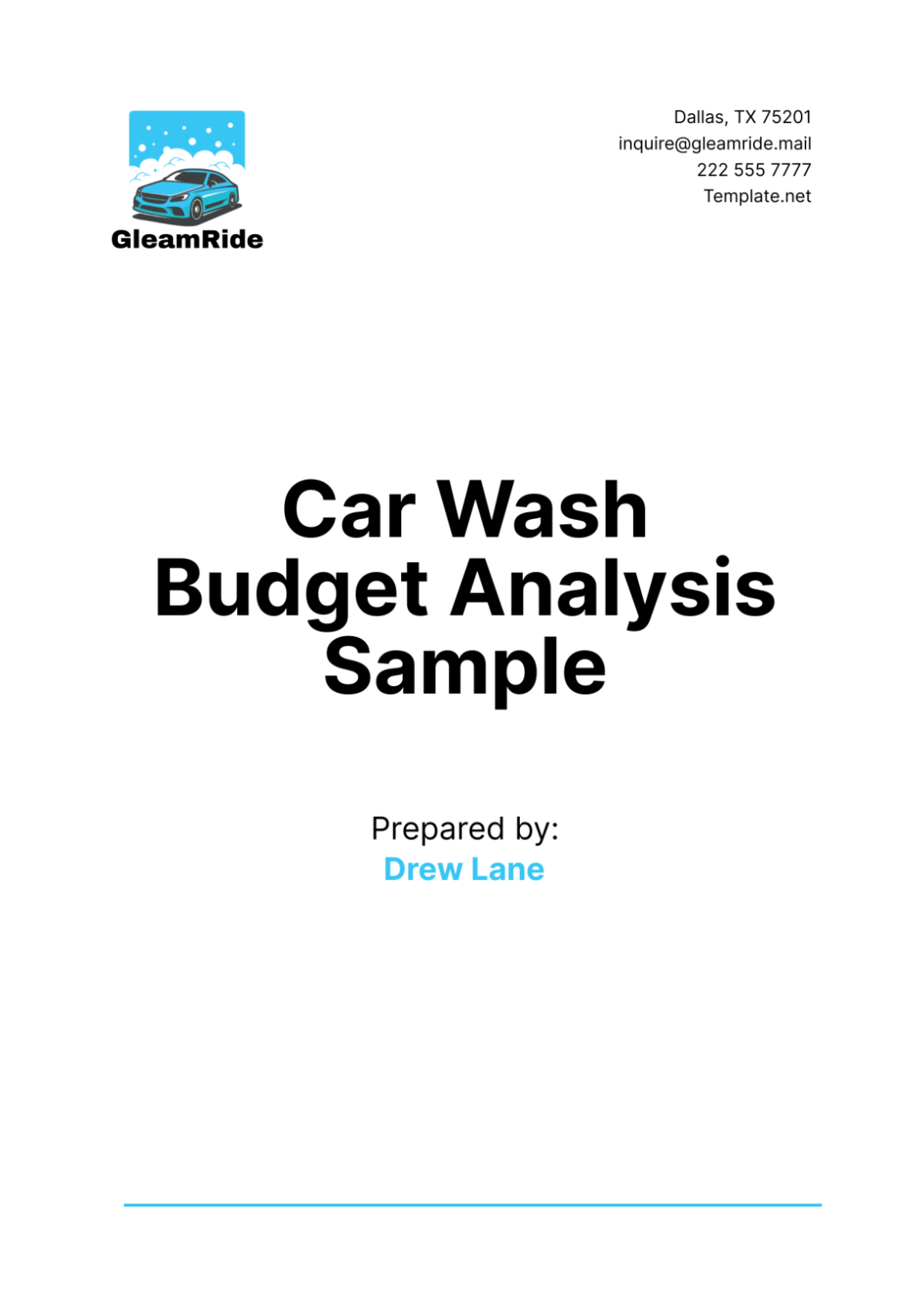Budget Analysis Report
Prepared by: [Your Name]
Company: [Your Company Name]
Date: [Date]
1. Introduction
This Budget Analysis Report evaluates the financial health of the organization by examining revenue and expenditure trends, identifying strengths and weaknesses, and offering actionable recommendations for improved budget management. By analyzing historical fiscal data and current budgetary performance, this report aims to provide a roadmap for sustainable growth and financial efficiency.
2. Executive Summary
The organization has shown steady growth in revenues over the past five years, with consistent contributions from diverse streams such as sales, service charges, and grants. Expenditures have increased proportionally, largely driven by operational expansion and personnel investments. This report highlights key findings, including areas where cost efficiencies can be achieved and opportunities for revenue enhancement.
3. Revenue Analysis
3.1 Revenue Sources
The primary revenue streams include:
Sales Revenue: Continues to be the most significant contributor, showing a consistent upward trend.
Service Charges: Steady but modest growth.
Interest Income: Incremental increases over the years.
Grants and Donations: Stable contributions, though relatively smaller.
3.2 Revenue Trends
The table below illustrates revenue growth over the past five years:
Year | Sales Revenue | Service Charges | Interest Income | Grants/Donations |
|---|---|---|---|---|
2050 | $1,200,000 | $150,000 | $30,000 | $200,000 |
2051 | $1,350,000 | $160,000 | $32,000 | $205,000 |
2052 | $1,500,000 | $170,000 | $34,000 | $210,000 |
2053 | $1,600,000 | $180,000 | $36,000 | $215,000 |
2054 | $1,700,000 | $190,000 | $38,000 | $220,000 |
Key Insights
Sales revenue has grown by 41.7% from 2050 to 2054.
Grants and donations have remained stable, necessitating diversification strategies to boost this stream.
4. Expenditure Analysis
4.1 Expenditure Categories
Personnel Costs: Gradual increases due to staffing expansions.
Operational Expenses: Significant growth linked to organizational growth.
Capital Expenditures: Investments in infrastructure and assets.
Miscellaneous Costs: Incremental increases in discretionary spending.
4.2 Expenditure Trends
Year | Personnel Costs | Operational Expenses | Capital Expenditures | Miscellaneous Costs |
|---|---|---|---|---|
2050 | $500,000 | $300,000 | $200,000 | $50,000 |
2051 | $550,000 | $350,000 | $220,000 | $60,000 |
2052 | $600,000 | $400,000 | $250,000 | $70,000 |
2053 | $650,000 | $450,000 | $275,000 | $80,000 |
2054 | $700,000 | $500,000 | $300,000 | $90,000 |
Key Insights
Operational expenses increased by 66.7% over five years, outpacing other categories.
Miscellaneous costs, while smaller, warrant closer scrutiny to identify savings.
5. Budget Surplus/Deficit
The organization has consistently achieved annual surpluses, indicating sound fiscal management:
Year | Total Revenue ($) | Total Expenditure ($) | Surplus/Deficit ($) |
|---|---|---|---|
2050 | $1,580,000 | $1,050,000 | $530,000 |
2051 | $1,747,000 | $1,180,000 | $567,000 |
2052 | $1,914,000 | $1,320,000 | $594,000 |
2053 | $2,031,000 | $1,455,000 | $576,000 |
2054 | $2,148,000 | $1,590,000 | $558,000 |
Key Insights
The surplus decreased slightly in 2054, signaling the need for expenditure control measures.
6. Risk Analysis
6.1 Revenue Risks
Overreliance on sales revenue exposes the organization to market fluctuations.
Limited growth in grant acquisition reduces financial flexibility.
6.2 Expenditure Risks
Rising operational costs may strain future budgets.
Capital expenditures require careful prioritization to avoid overextension.
7. Recommendations
7.1 Optimizing Revenue Streams
Diversify income sources by exploring partnerships and new market opportunities.
Increase efforts to secure grants through targeted initiatives.
7.2 Enhancing Cost Efficiency
Conduct an in-depth operational audit to identify inefficiencies.
Leverage automation and technology to reduce personnel and operational costs.
7.3 Strategic Planning
Develop a five-year financial plan to align expenditures with revenue growth.
Introduce scenario planning to prepare for potential revenue shortfalls.
7.4 Monitoring and Reporting
Implement a robust financial monitoring system for real-time tracking of budget performance.
Ensure periodic reporting to stakeholders for increased transparency.
8. Conclusion
The organization has demonstrated robust financial growth and prudent budget management. However, the trends in expenditure growth necessitate a proactive approach to cost control and revenue diversification. By implementing the recommendations in this report, the organization can enhance its financial sustainability and achieve long-term success.

















































